Best Disposable Bowl for Hot Soup:All You Need To Know (2023 Update)
- By YANXIYAN
- May 30, 2023
What is the best disposable bowl for hot soup?
In this article, you will learn:
- The five types of disposable bowls available for foodservice
- Which disposable bowl is good for takeaway use?
- Are they safe for reheating?
- Which disposable bowl is eco-friendly?
Let’s dive in
Paper Soup Cup
Paper soup cups have three benefits which is good for hot soup use
100% Eco-friendly feature
Paper soup cups are more eco-friendly than plastic soup cups.
They are made from renewable resources and are completely compostable and biodegradable.
However, some hot paper soup cups are not compostable due to the plastic lining inside.
For example, they can be recycled into tissue paper, paper towels, or cardboard boxes.
Paper soup cups can also be repurposed for arts and crafts projects, as plant holders or organizers, or even as compost for gardening.
In contrast, plastic soup cups take 450 years to decompose, polluting the oceans and harming marine life.
Furthermore, paper soup cups have a lower carbon footprint than plastic ones because they require less energy to manufacture and produce.
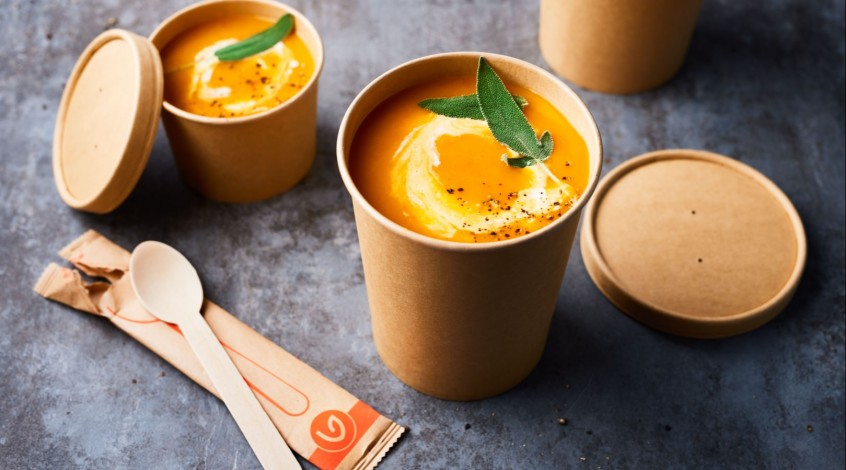
Hot Resistant and Freezer Safe
A paper soup cup is a good option for hot and cold food.
Why?
Because they are typically made from high-quality paperboard coated with a thin layer of polyethylene to provide a barrier against liquids, heat, and freezer cold(Double pe coating).
For example, The Kraft paper cup can accommodate both liquids and solid materials at temperatures as high as 95°C (203°F), and it is fully compatible with microwave usage for 2-3 mins.
So, the coating helps to prevent the soup from soaking through the paper and keeps the cup from becoming soggy.
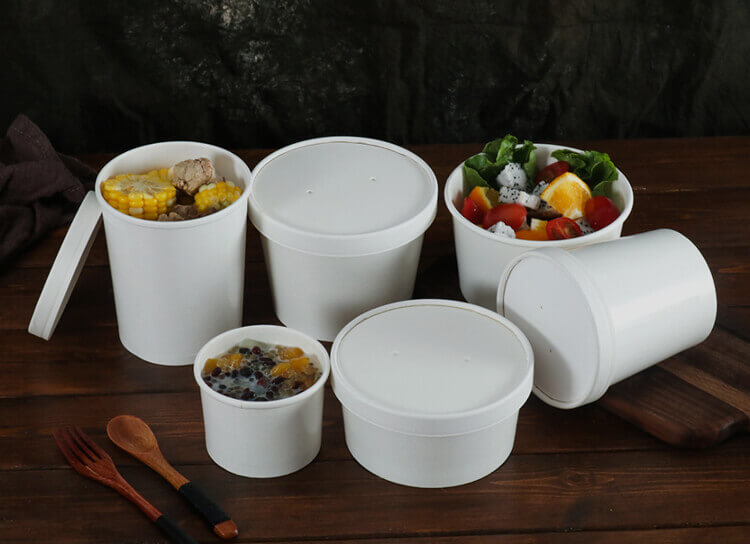
Good for Takeaway
Paper soup cups are an excellent choice for takeaway hot soup because they are convenient, leak-proof, and can withstand high temperatures.
They are designed to be portable and can be easily carried around without spilling or leaking.
Moreover, paper soup cups are available in different sizes, making them versatile for serving portions.
For instance, a 16oz paper soup cup is perfect for a hearty serving of soup for one person, while a 32oz cup is ideal for sharing with multiple people.
Disposable Plastic Soup Cups
Plastic soup cup also have three advantage and one disadvantage
Cost Effective
Plastic soup cups are the good choice for hot soup as they are cost-effective.
They are cheaper to produce as compared to other options like paper or bamboo cups.
For example, a small soup shop can save significant money using plastic soup cups instead of ceramic or bamboo cups.
Like, a 50-pack of 12-ounce plastic cups costs $7.99, while a similar pack of ceramic or bamboo cups can cost > $15 or more.
This cost savings can be passed on to their customers by offering soup at more affordable prices
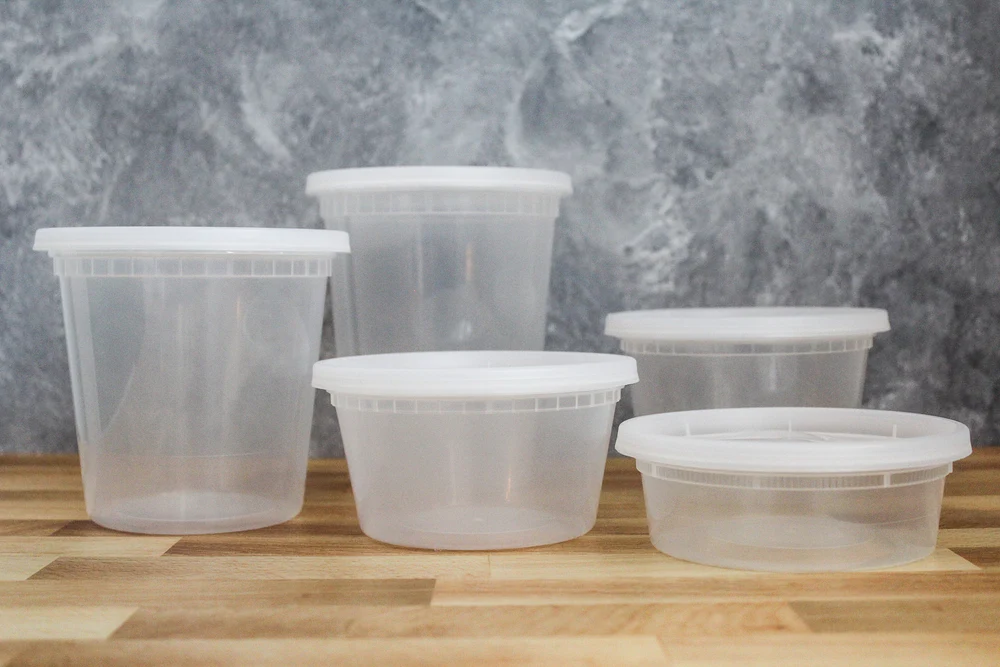
Durability and Flexibility
Plastic soup cups are a durable and flexible option for serving hot soup.
They are made from sturdy materials that can withstand high temperatures and are less likely to break than ceramic or glass alternatives.
In addition, their flexibility allows for easy handling and storage, making them a convenient choice for busy food establishments.
The disposable cup market is projected to reach US$11.6 billion by 2023, with an estimated CAGR of 6.2% between 2023 and 2033, according to Future Market Insights (FMI).
Plastic soup cups are often used in fast-food restaurants due to their durability and stackable design.
However, it’s essential to dispose of them properly to reduce their environmental impact.
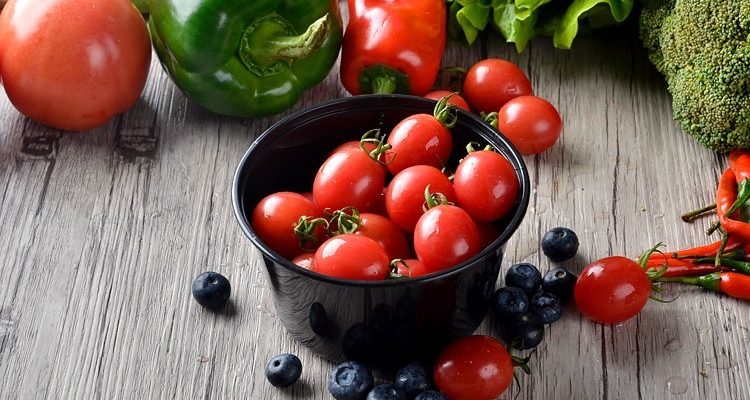
Microwave Safe and Freezer Friendly
Plastic cups are microwave-safe and freezer friendly due to their chemical properties and ability to withstand extreme temperatures.
It’s because of the components like polypropylene in plastic that have a high melting point and are resistant to thermal stress.
This allows plastic cups to retain their shape and integrity when exposed to heat or cold.
For example, plastic soup cups offer the convenience of reheating leftover soup in the microwave without the risk of the cup melting or deforming.
They also provide a practical storage solution for homemade soups in the freezer.
However, not all plastic bowls are microwave-safe. Ensure the bowl has a microwave-safe label on it before putting it in the microwave.
Pro tip: Avoid microwaving plastic cups for an extended period, as this can cause the cup to melt or deform and potentially release harmful chemicals into the food.
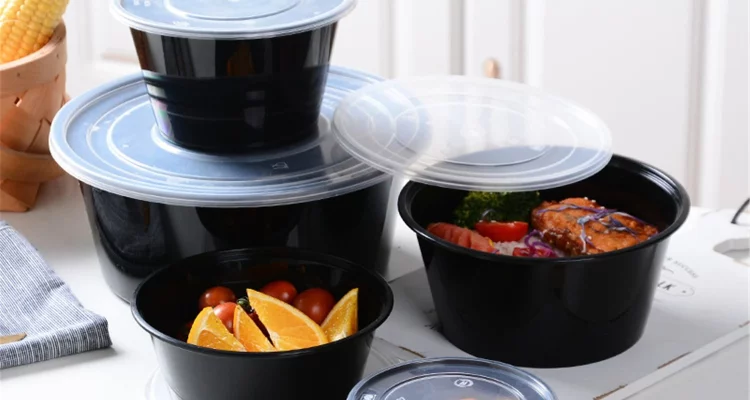
Very Good for Delivery Packaging
Plastic soup cups are a popular choice for food delivery services.
They provide a secure and leak-proof container for transporting soup to customers.
For instance, plastic soup cups often come with tight-fitting lids that prevent spills and leaks, making them an ideal option for delivery services.
This helps maintain the soup’s quality and temperature during transport and provides a more hygienic option for customers.
Not Eco-Friendly
Plastic soup cups are popular for hot soup due to their convenience and durability.
However, they are not considered eco-friendly.
Plastic is a non-biodegradable material that can take 400 years to break down, leading to environmental pollution and harm to wildlife.
For example, a plastic soup cup thrown away after use can end up in landfills, where it will take hundreds of years to degrade.
In the meantime, the plastic cup can release toxic chemicals into the soil and water, harming plants, animals, and ecosystems.
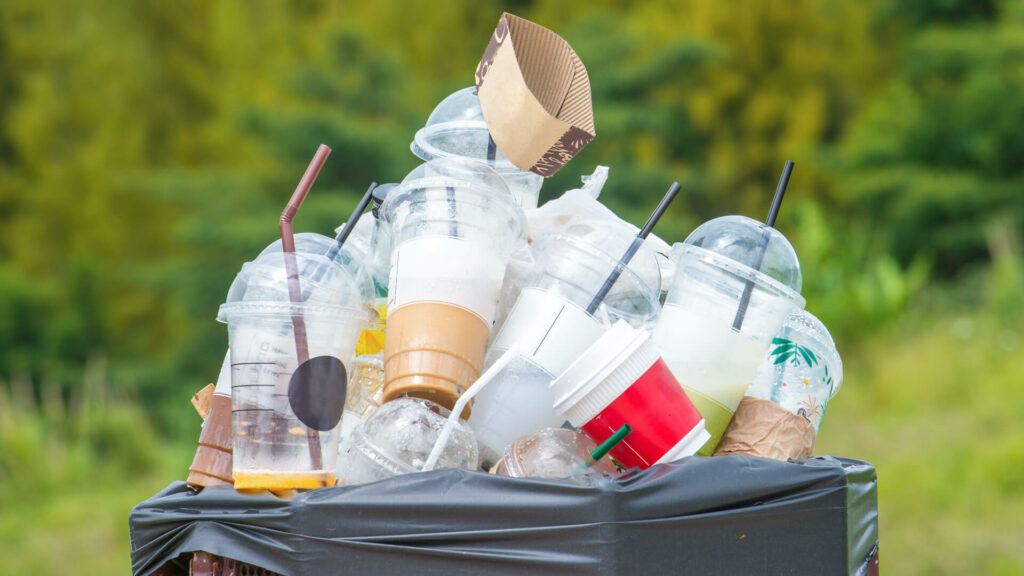
Sugarcane Bagasse Fiber Soup Cups
Sugarcane soup cups have two advantages and three disadvantages as foodservice container
100% Biodegradable
Sugarcane bagasse fiber soup cups contain 100% biodegradable and compostable properties.
These cups are a sustainable alternative to paper and plastic cups made from fibrous residue left after sugarcane processing.
Usually, it takes 30 to 90 days for sugarcane bagasse fiber products to decompose under ideal conditions fully.
For example, a thin sugarcane cup with a thickness of around 1.5-2 mm may decompose within 30-60 days under ideal conditions.
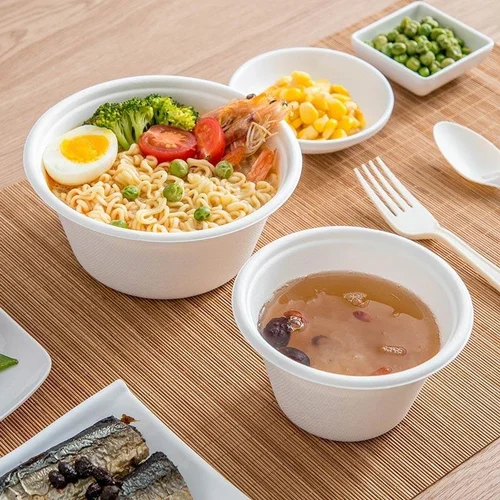
Expensive than other soup cup
One drawback of sugarcane bagasse fiber soup cups is that they can be more expensive than paper and plastic cups.
Why?
It is due to the cost of production.
Sugarcane bagasse fiber is a new material for making disposable food service products.
This material requires advanced technology and specialized equipment to produce, which increases production costs.
For example, a pack of 50 sugarcane bagasse cups might cost around $10 to $20, while a pack of 50 plastic or paper cups might cost around $5 to $15.
However, the cups’ eco-friendliness and ability to enhance a brand’s sustainability image often offset this cost.
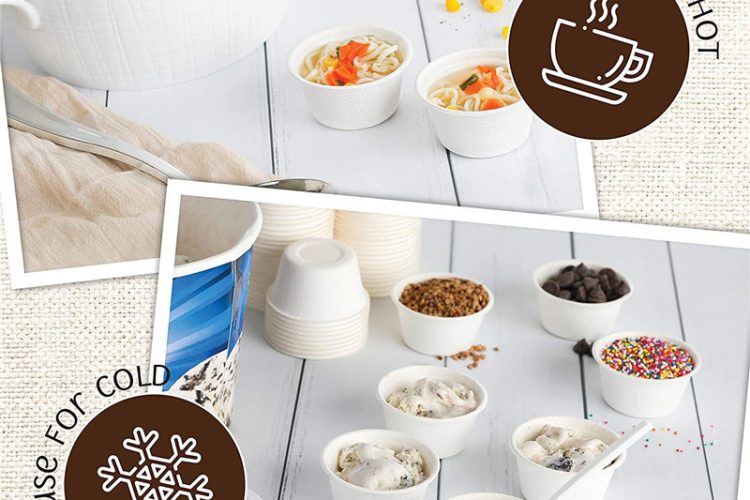
Microwave and Oven Safe
Sugarcane bagasse fiber cups are resistant to heat and grease.
These cups can withstand temperatures up to 120 degrees Celsius, making them suitable for various soup types and serving styles.
How?
This resistance is due to the inherent properties of Bagasse fiber.
Bagasse fiber is derived from the fibrous residue that remains after juice extraction from sugarcane, a natural and renewable resource.
The fiber’s unique composition makes it naturally resistant to heat and grease.
So, they are also microwave and oven safe, providing a convenient option for reheating the soup.
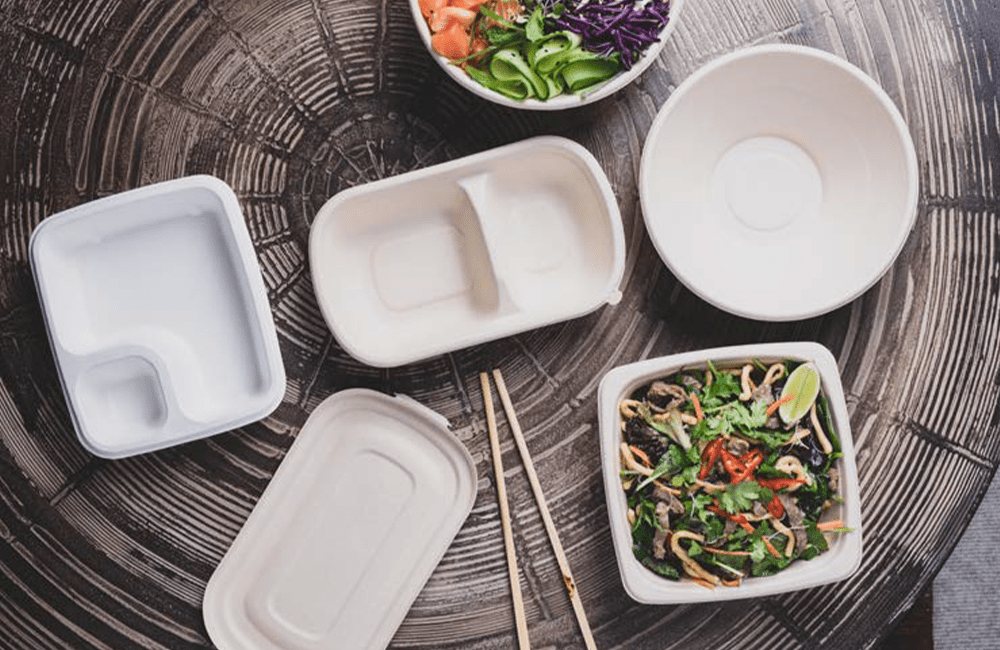
Not Good for Soup Takeaway Use
Sugarcane bagasse cups are sturdier than plastic or aluminum containers.
However, they might not be leak-proof, when made with low quality raw material.
This can result in spills or leaks during transport, causing inconvenience and potential safety hazards for customers.
Why does it happen?
It happens because bagasse cups may lose strength when used to hold foods hotter than 95℃ during takeaways.
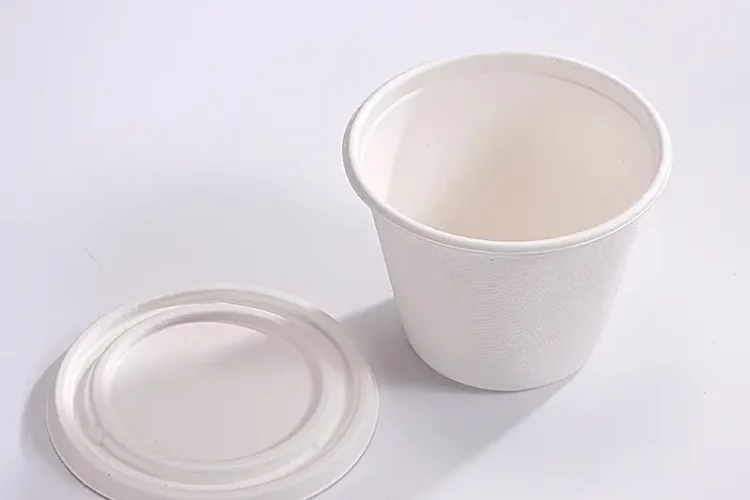
Not Support Custom Logo
Sugarcane bagasse cups are among the best disposable cups for hot soups and beverages.
However, they do not support custom logos.
This can be a drawback for businesses looking to brand their products.
For example, sugarcane bagasse cups cannot be custom branded.
This may cause restaurants or cafes to miss out on marketing opportunities when using them for takeaway orders of hot soups or beverages.
In fact, a Grand View Research study highlights the expected growth of $20.76 billion disposable cups demand for takeaways by 2028.
However, the same study emphasized the significance of branding and customization for businesses looking to compete in the market.
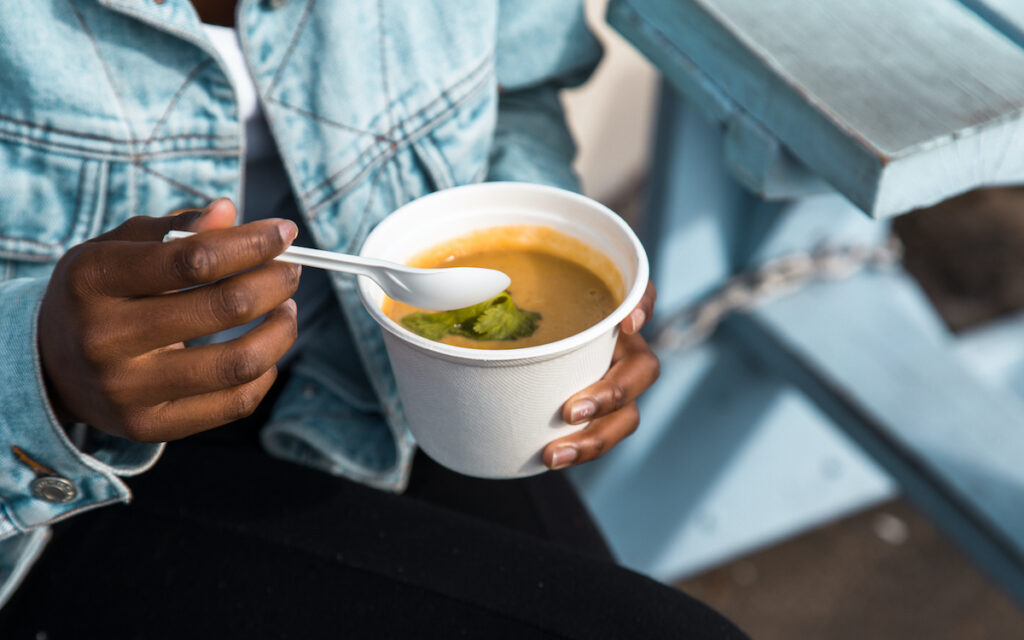
Paper Plate
The disposable paper plate is not good for soup use.It has three disadvantage following
Not for Delivery Use
Paper plates are low-cost, eco-friendly, and ease-of-use serving option.
It’s an ideal and versatile choice for different soups and presentations.
However, paper plates may not be suitable for delivery or takeaway orders.
Why?
It is due to their potential to leak or become soggy when exposed to heat and moisture for extended periods.
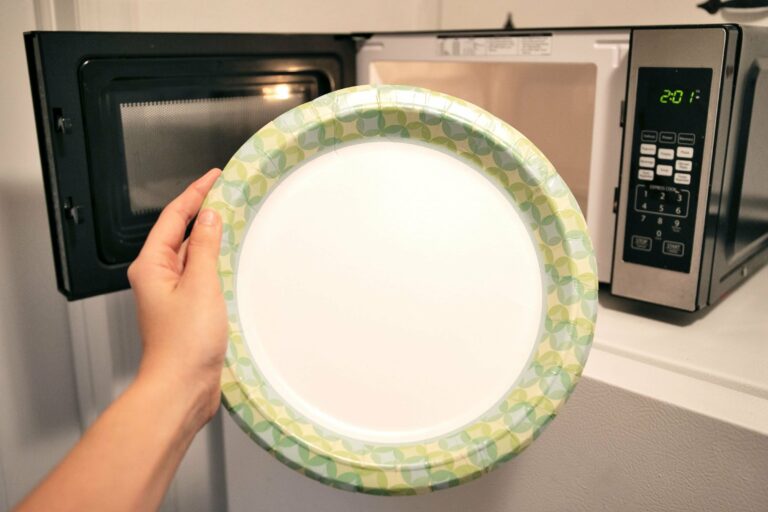
Not Keep Soup Warm for a Long Time
Paper plates can only retain heat for a short time, making it difficult for customers to enjoy their soup at a warm temperature.
For example, a study conducted by the NCBI found that most consumers prefer their hot food to be served at a temperature of 160- 185℉.
However, paper plates may only be able to maintain this temperature temporarily, especially in cold or outdoor environments.
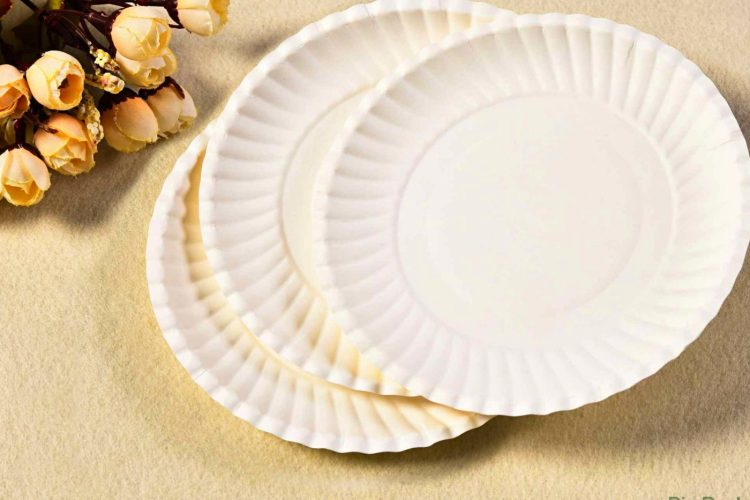
For Dinner, a Holiday, or another Special Occasion
Paper plates are ideal for various special occasions due to their convenience, versatility, and affordability.
For example, a study conducted by the Freedonia Group in 2023 found that the demand for disposable plates in the US is expected to grow by 3.8% annually.
Why?
Because of increased demand for convenience, hygiene, and time-saving options.
Paper plates are also popular due to their low cost, easy cleanup, and eco-friendliness, as they can be recycled or composted after use.

Conclusion
Do you prioritize convenience, cost, eco-friendliness, or thermal insulation in disposable bowl?
If yes, then consider your specific needs and preferences, and explore the above mentioned options.
Whether you serve soup in a restaurant, host a party at home, or deliver food to customers, there is a suitable disposable bowl for you.
So, choose wisely or contact us for further details!

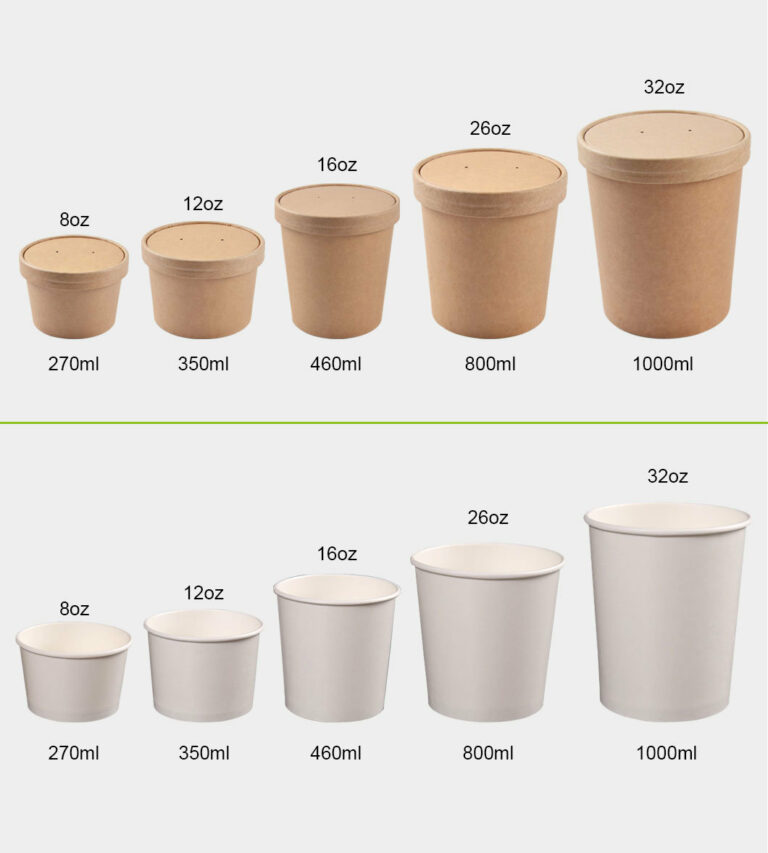
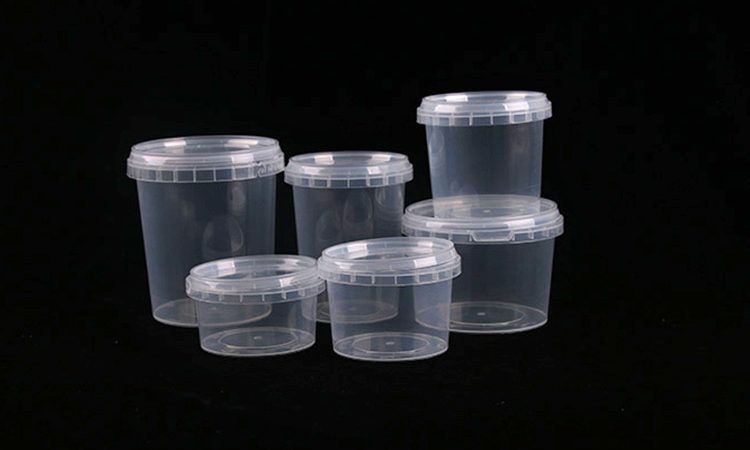
4 Responses
I am looking for a disposable container for soup with a lid. Do you have samples?
Yes,can you email me ,my email is [email protected]
contact us
Looking for uncolored paper or other similar material for plates cups and bowls in stores or internet.